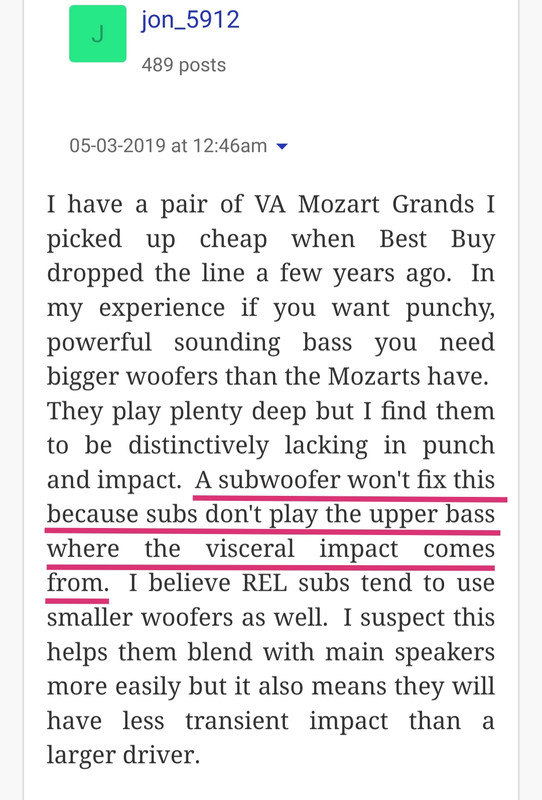@mijostyn --
+1
Many a sub(s) implementation appear strikingly meager, malnourished and of secondary consideration in its overall implementation. I'm guessing it's that mentality again; why have a couple or further multitude of (sub-)bass behemoths lying around in the listening space when you can have all but one the size of a small cathouse?
Because it isn't only about extension, but rather, as you so rightly point out, it's also and not least about the added sensation of power and effortlessness of presentation to instill that live feel of music, including the contribution from the main speakers here when properly high-passed.
And yet, what is it about "hi-fi" that very generally turns its back on the inherent power delivery and (truer) size of music and instead relegates it to something brute, unsophisticated and undesirable? You'd certainly think that the way this vital aspect of music reproduction is sorely dismissed either (and mostly) in silence and vehement reluctance, or even downright ridicule.
Anyone can feel free to implement subs the way they see fit, that really goes without saying, but augmenting the mains run full-range with smaller subs is really only the tip of the iceberg. Perhaps it points to the need for a more radical and re-defined approach in speaker implementation that should more readily see the acceptance of DSP and active configuration, in addition to letting size of speakers and subs have its say. The latter part has been stubbornly missed out for decades, so one wonders whether it will ever find any real traction with audiophiles at large.
It seems the way it works is that if you can't go the whole nine yards with regard to physics then make it appear that not doing so is actually to the benefit of sound reproduction; indeed, it becomes a rationale in itself.


